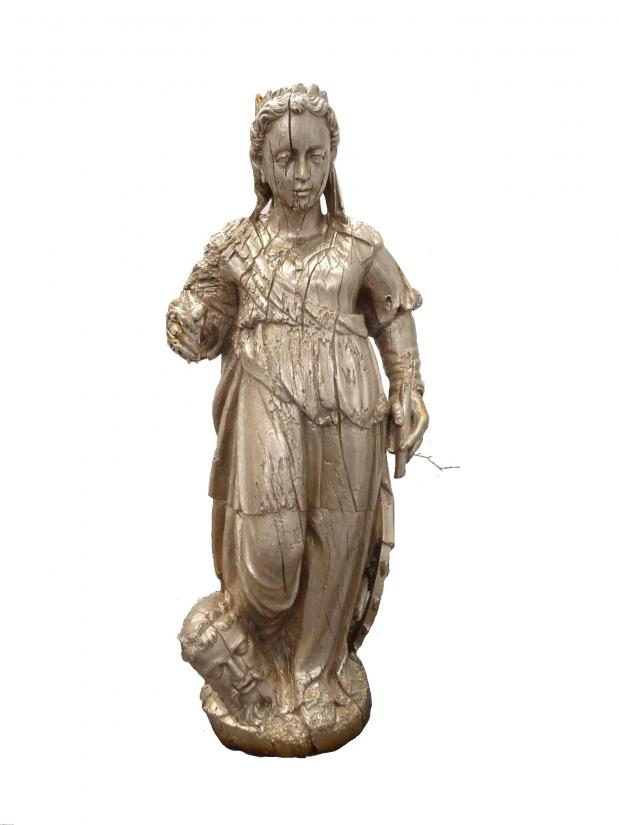For many years, in a garden in Güldenhof, Germany, birds have been living inside a wooden icon from the 17th century.
The Danish-Vietnamese artist Danh Vo modifies effects from the past and imbues them with new stories. In this case, he placed the icon in a tree and drilled holes for the birds as part of his artistic practice.
The figure depicts St Catherine of Alexandria, who, according to legend, was martyred in the 4th century. She later became a muse to Joan of Arc, and along with three other female Catholic saints, she is one of the Holy Helpers who are invoked in times of mourning or distress.
Biodiversity and bronze
Now, Danh Vo is having a bronze cast made of the original icon, which itself has been modified and reshaped by nature over time. The bronze sculpture will be installed in Nivå as the first outside object to be added to the Station Garden since the museum bought the land in 2021. The Nivaagaard Collection acquired the sculpture with support from the New Carlsberg Foundation.
On Vo’s directions, the museum initially left the Station Garden plot untended, dedicated to biodiversity, based on the notion that You Can Not Rush a Sprout. In recent years, an insect-friendly natural fence and bee hives have been added, and the site has been used to provide education about biodiversity.
In close collaboration with Danh Vo, who grew up in Nivå, the museum aims to use the plot to marks its local roots – not by installing a traditional sculpture but through a plot of land that will change over time.
Open to the public
The founder of the Nivaagaard Collection, Johannes Hage, took steps to preserve the museum grounds as a protected natural site. In this spirit, the museum established the Station Garden on a vacant plot next to Nivå Station as part of its long-running cooperation with Danh Vo.
Under the title Danh Vo Presents, Vo has presented exhibitions at the museum and, on the Station Garden plot, a potato field created in partnership with local citizens as well as the podcast series You Can Not Rush a Sprout.
The museum park is open to the public around the clock.
Danh Vo
Danh Vo is a Danish-Vietnamese artist, born in Vietnam in 1975 and trained at the Royal Danish Academy of Fine Arts in Copenhagen and Städelschule in Frankfurt, Germany.
Vo’s art reflects personal life stories in a continuous exchange with our common world history, drawing on his own and his family’s experiences to uncover and challenge social issues. His works typically incorporate original existing objects and references to historical events.
In recent years, nature has taken on an increasingly dominant role in his art. To Vo, nature is a way of thinking and being in the world, as he engages with nature’s resources and cultivates the garden at his farm in Güldenhof.
The Nivaagaard Collection and the Station Garden
The Nivaagaard Collection in the town of Nivå north of Copenhagen is a Danish art museum founded by landowner and art collector Johannes Hage. In 1908, the private collection was donated to the public in the form of an independent institution.
In 2021, the Nivaagaard Collection acquired a plot next to Nivå Station, 800 metres from the museum. With this plot, the museum marks its local roots – not with a traditional sculpture but with 690 m2 of land that is going to change over the years.
Danh Vo has been given free rein to create a garden over time. Throughout history, many artists and artist groups have been interested in the garden and the pleasures its offers. However, Danh Vo’s engagement does not revolve around the garden as artistic motif. To Vo, a garden is way of thinking, a way of being in the world that, in many regards, strikes a contrast to the life of international exhibitions that he has led for many years.



